In a world filled with approximately 400,000 species of flowers, Flowers that start with X it’s pretty much impossible to remember the names of each flower.
Even the most experienced horticulturists and florists have a hard time remembering the common names and scientific classifications of every species, especially when the names are complicated.
For beginner gardeners and experienced horticulturists alike, the best way to learn about flowers is to categorize them into groups according to a common similarity, such as flowers that share the same color or first letter.
Whether you’re wanting to expand your knowledge of flowers with some very complex names or if you’re trying to remember the name of a particular flowering species, here is our list of flowers that start with X!
1. Xerophyllum
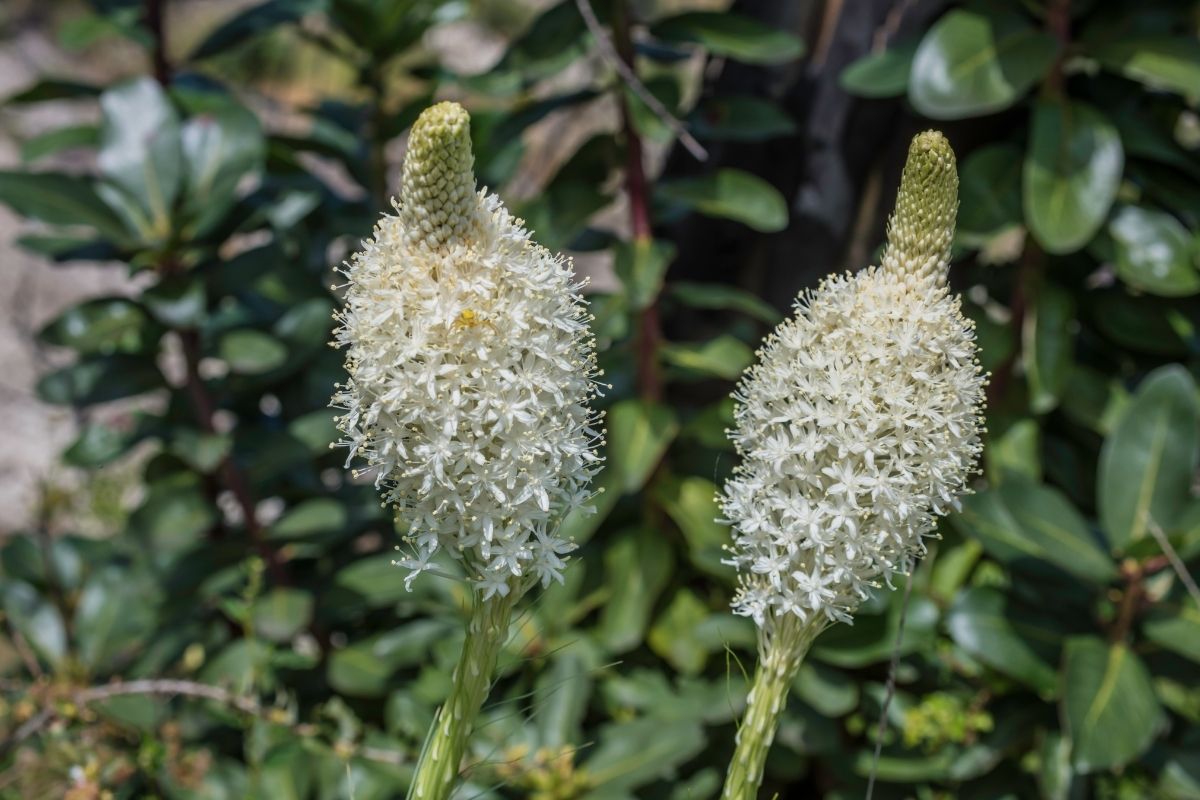
Xerophyllum is a genus of flowering perennial plants native to North America. The genus is very small, with only two species in the genus – Xerophyllum asphodeloides and Xerophyllum tenax.
Xerophyllum asphodeloides is more affectionately known as turkey beard. Turkey beard plants are popularly planted in gardens as a statement piece amongst a flower bed for their fascinating appearance, consisting of tall erect spikes featuring dense clusters of tiny white flowers, creating an almost fluffy look.
Turkey beard flowers work brilliantly at the back of borders to add some dimension and height. Plus, the white blooms help to enhance the bright colors of surrounding flowers.
Xerophyllum tenax is also known as bear grass, and is most commonly harvested as a source for basket weaving in Native American communities. This is mostly because of the plant’s long, grass-like leaves that are resistant to water. Bear grass, like turkey beard, features clusters of white blooms at the top of each tall spike.
Not only this, but bear grass is a symbol of rebirth and new beginnings as the flowers are typically the first to bloom after a wild fire. This is because its rhizomatous roots are fire-resistant, allowing for the plant to recolonize in a burnt area.
Both xerophyllum species like to grow in full or partial sun and loamy or sandy well-drained soil.
2. Xanthisma
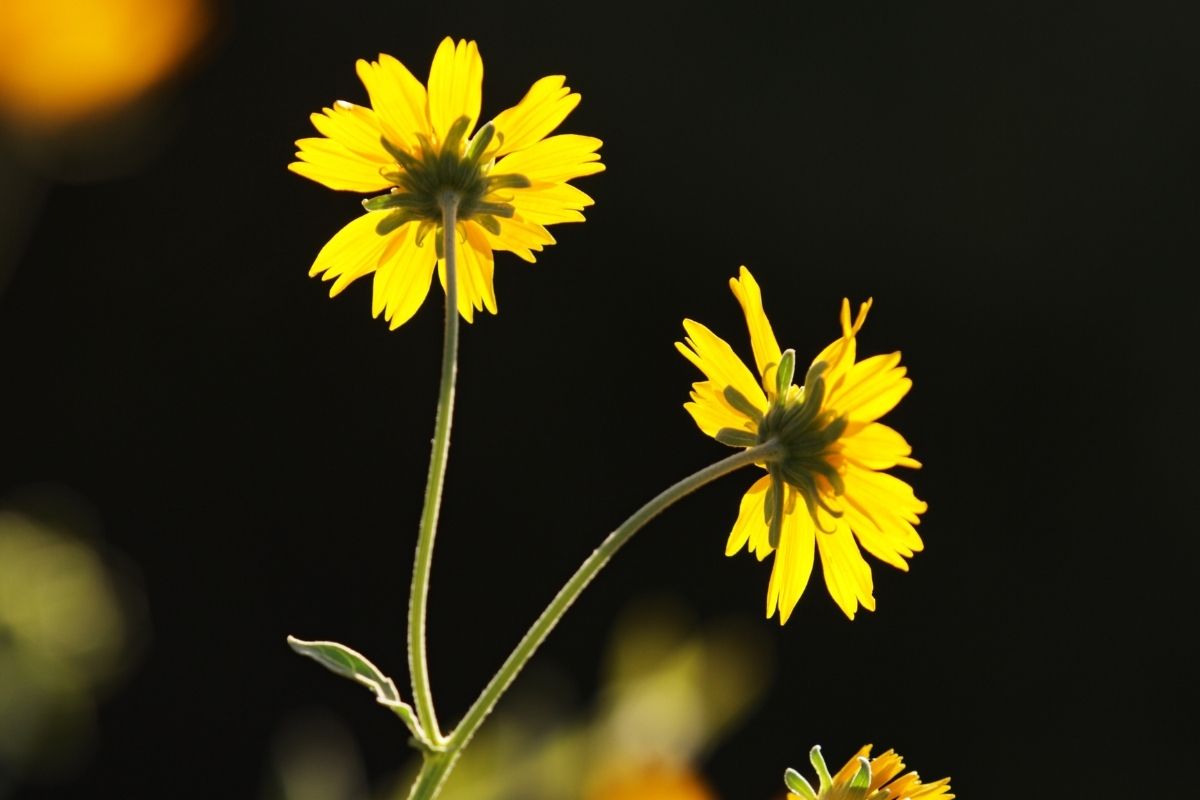
Xanthisma is a genus of about 10 flowering plants in the sunflower family. The most common nickname for this genus is the sleep-daisy, which is mostly due to the daisy-like appearance of each flower. These are wildflowers native to the United States and Mexico, appearing most commonly in woodlands or at the sides of roads during spring.
The other reason why xanthisma flowers are often called sleep-daisies is because the flowers exhibit a behavior known as nyctinasty. Nyctinasty is a rhythm found in certain plants where the petals of a flower open up during the day and close at night.
Xanthismas are a great way to add a splash of color to a wildflower-themed garden or border. These flowers are typically bright yellow (though they sometimes come in a white shade) and look like a classic daisy. They can grow up to 2 feet tall and work brilliantly at the edge of a border.
Sleep-daisies are fairly easy to grow. They can technically grow on neglect as they prefer sandy or dry well-drained soil and little watering, as well as full or partial sun.
3. Xanthoceras sorbifolium
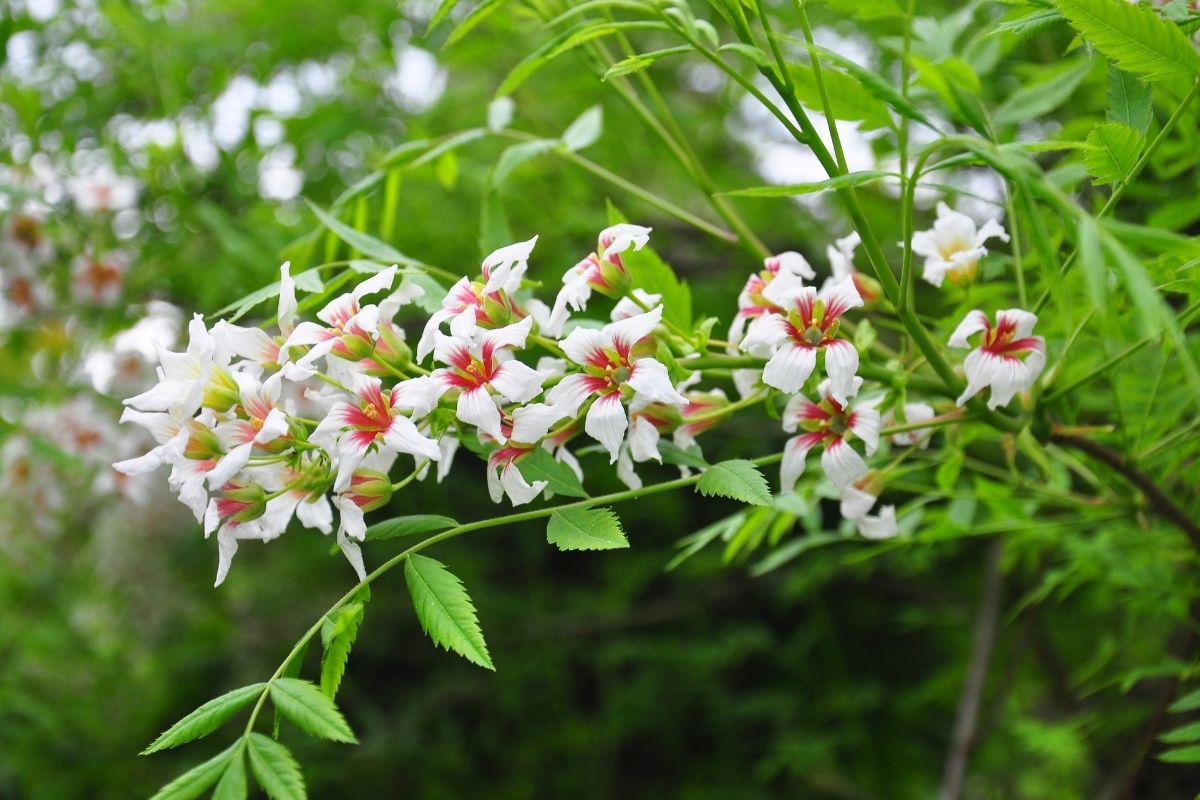
Xanthoceras sorbifolium (also known as yellowhorn, golden horn, or the Chinese flowering chestnut) is a flowering shrub species in the soapberry family. Native to northern China and cultivated in Russia, these deciduous shrubs can grow up to 8 meters tall, providing a lovely variation of height to a garden.
These shrubby trees are perennial and consist of green leaves (often with a hint of gray) bearing white flowers with yellow centers. Sometimes, the flowers appear orange with a red center, but the white variety is most common. The leaves and flowers are positioned in an upright fashion, making the tree appear even taller than it is.
With a lifespan of around 10 to 20 years, the yellowhorn is a great shrub to be fully committed to. It prefers to grow in well-drained soil, full sun, and in a sheltered environment. The flowers only bloom in spring, and the tree goes dormant in winter.
4. Xylobium
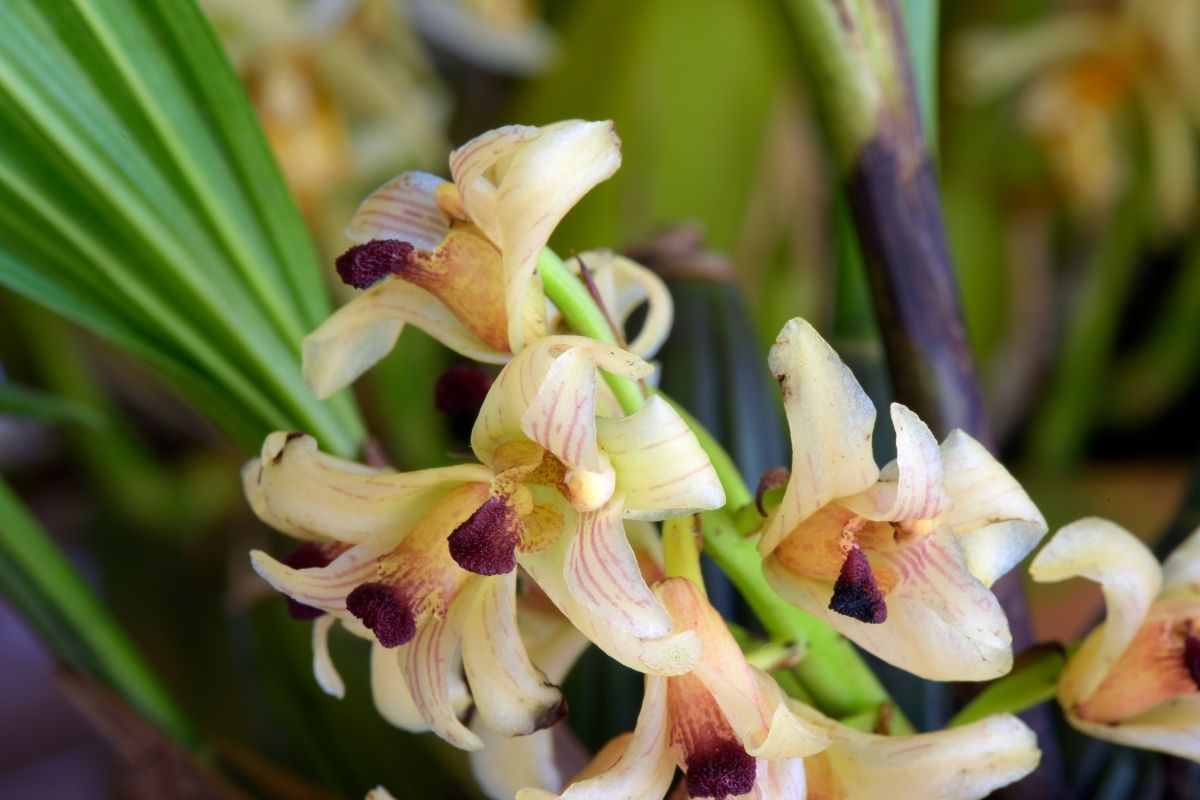
Xylobium, or xyl amongst expert horticulturists, is a genus of flowering plants related to the orchid family. These flowers are native to tropical America and are popularly cultivated for their fascinating appearances.
All 31-35 species within the genus exhibit the classic characteristics of a tropical flower, including the thick orchid-like petals, standout colors and patterns, and star-shaped petal structures. In most cases, xyl species consist of star-shaped cream flowers with a pinkish-red center.
Xylobiums typically prefer a moderately humid environment (between 40% and 70%) in a bright light and cool/intermediate temperatures. They like to grow in well-drained soil and minimal watering to prevent root rot.
Related: 27 Fascinating Types Of Jasmine Plants(Including Photos)
5. Xyris
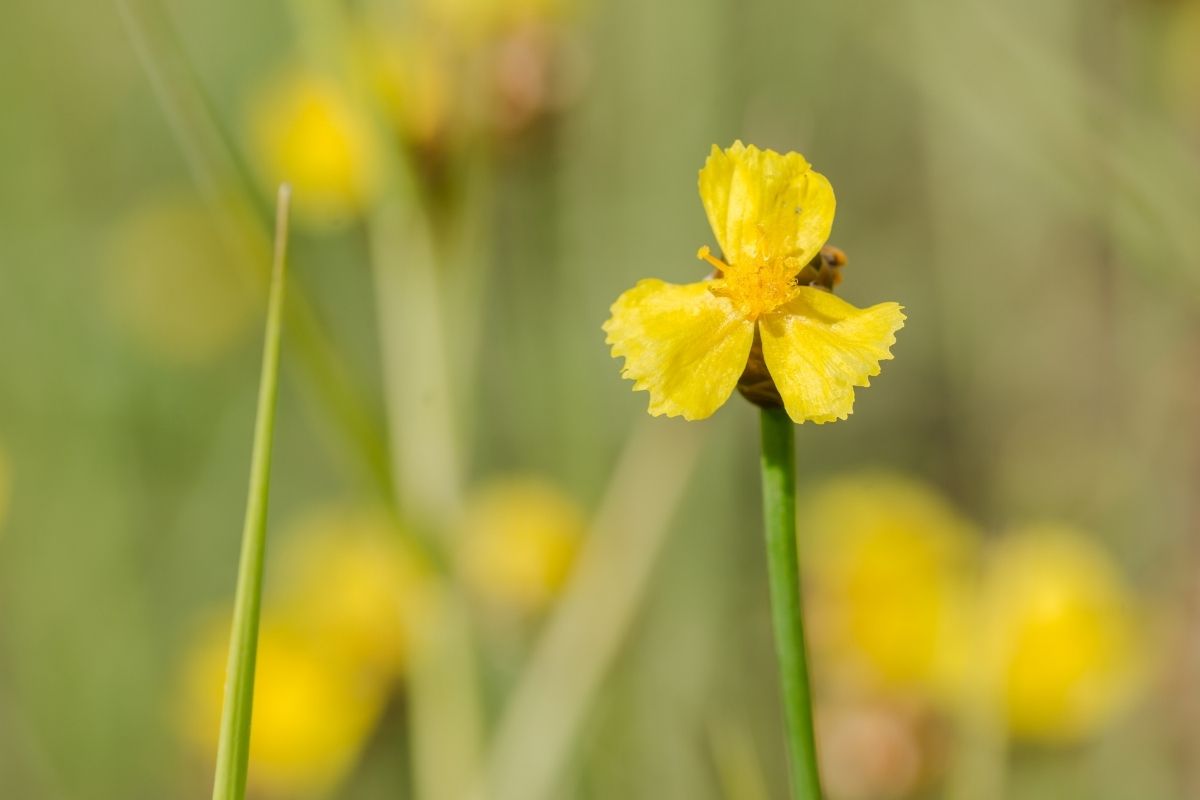
Xyris is a genus of about 250 flowering plants in the yellow-eyed grass family. The flowers are known as yellow-eyed grasses and are distributed across the world, though they are most commonly found in the moist soils and open lands of the Guianas.
The leaves of a xyris flower typically appear in spiral, flat, or rounded shape at the base of the plant. On top of each stem bears a small bright yellow flower (though sometimes purple or white) consisting of around 3-4 petals, appearing slightly like a common buttercup.
Xyris flowers are ideal for growing at the edge of borders, underneath shrubs or trees, and in a wildflower-themed garden. They prefer to grow in well-drained moist soil that’s high in organic matter as well as full sun.
6. Xyris Difformis
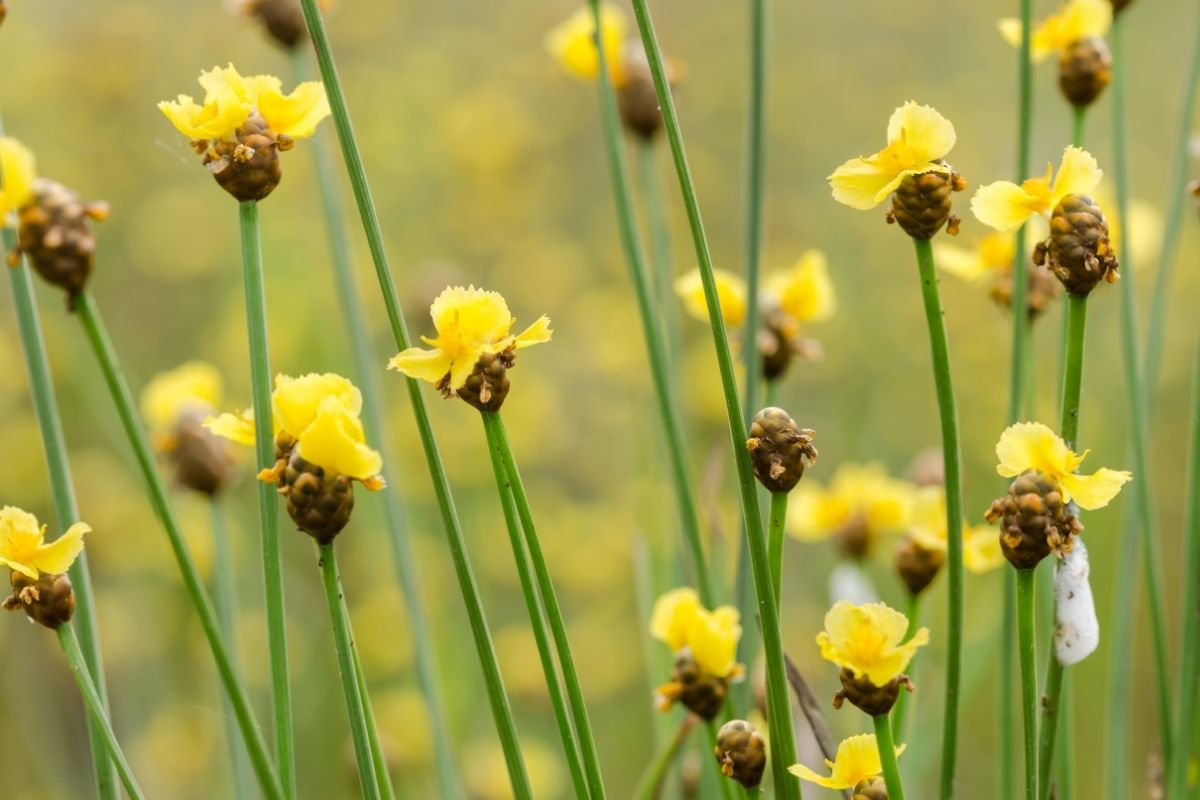
Also known as the bog yellow-eyed grass, xyris difformis is arguably the most popular and commonly grown species in the aforementioned xyris genus. Native across various parts of North America and Central America, these herbaceous perennials are favored in wildflower-themed gardens.
As a species of xyris, xyris difformis typically prefer a moist habitat with well-drained soil and full sun. They work best when planted at the edges of borders to receive full sunlight. The flowers consist of three rounded petals joined with a yellow stamen, though they sometimes come in red or pink shades.
7. Xerochrysum
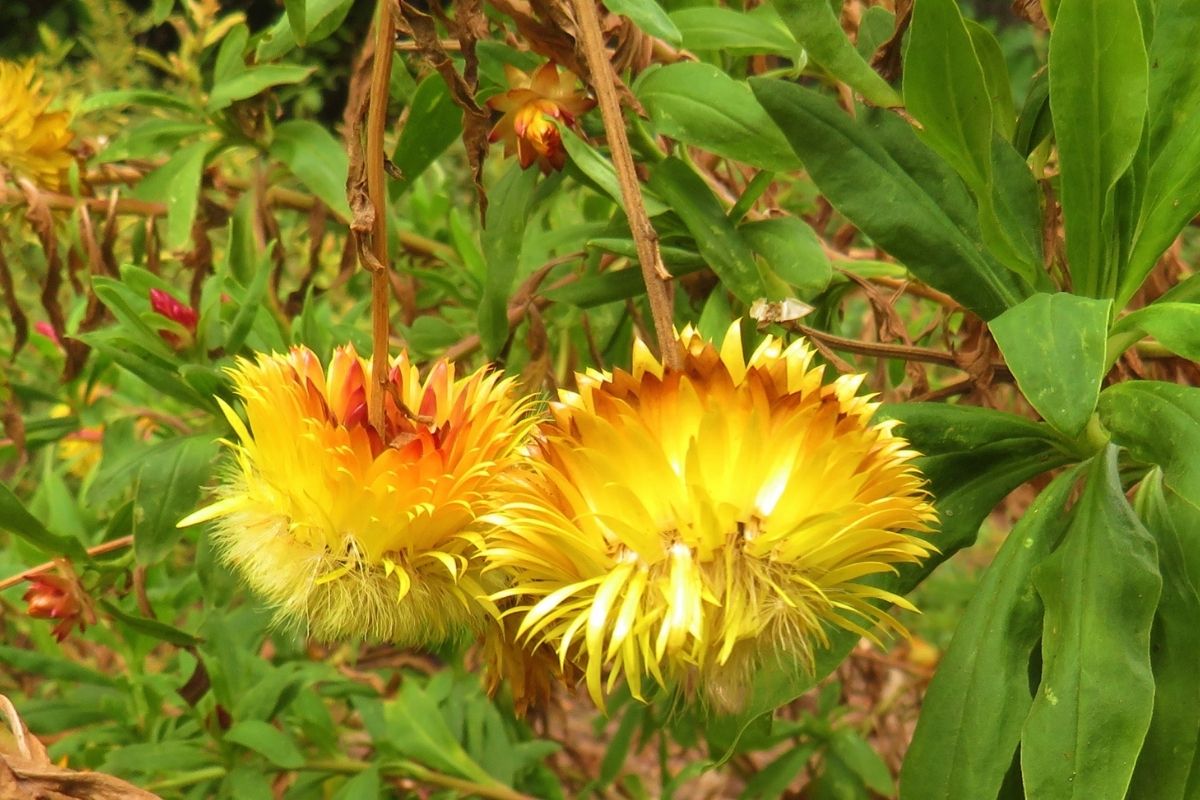
Xerochrysum is an Australian-native genus of about 80 species of flowering plants. They are sometimes known as the everlasting flower as they are perennials, meaning they will continue to bloom and re-grow after every year. These plants bloom flowers in summer and fall.
Xerochrysum is a popular genus amongst horticulturists for their attractive appearance. They can grow anywhere from 30-150 cm tall, bearing a dense rosette-shaped flower on each stalk. These flowers look like a mixture between chrysanthemums and daisies. While they typically appear in a bright yellow coloration, some species produce coral or white blooms.
Xerochrysum flowers like to grow in moist, well-drained loamy soil in full sun. As they don’t mind being sheltered or not, they can be planted virtually anywhere in a garden that accommodates their sun-loving preferences.
8. Xeranthemum
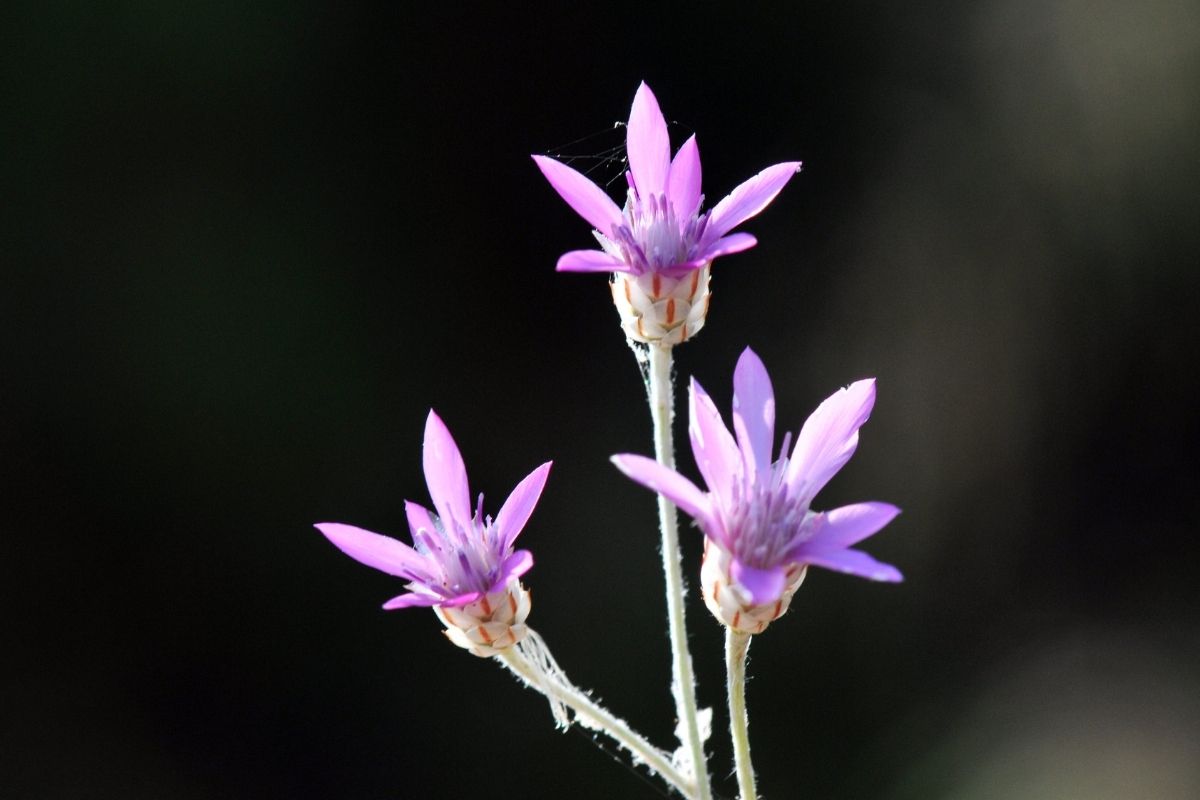
Native to Southern Europe, xeranthemum is a group of about 6 species of flowering plants belonging to the sunflower family. These are slender annuals that consist of tall stalks bearing grayish-green leaves and a daisy-like flower. Depending on the species and variety, these flowers can be yellow, white, pink, or red.
Xeranthemums are popular for their ability to grow in most habitats, including flower borders, public gardens, courtyard gardens, urban gardens, and gravel gardens. They can also be cut and dried, making them highly suitable for floral arrangements.
Xeranthemums are brilliant plants for beginner gardeners for their low-maintenance care requirements. They are generally pest-free and disease-free and prefer to grow in well-drained soil and full sun. These flowers can also grow in sheltered or non-sheltered environments.
Related: A Whole New World: 10 Different Types Of Jasmine Plant
9. Xylosma
Xylosma is a genus of about 100 species of flowering plants in the willow family. These flowering plants are typically evergreen shrubs and trees known as brush hollies or logwoods thanks to their woody appearances. Due to their heights (growing up to 25 feet tall), xylosma trees are typically grown as topiary or hedge plants.
Xylosmas consist of alternating green waxy leaves and strongly scented small yellow (often yellow-orange) flowers that bloom on racemes. These shrubs also grow small blackish-purple berries, with some species in the genus being grown purely for their edible berries. They will bloom these flowers and berries between August and October.
As these plants are native to the tropical and subtropical regions of South America, Central America, parts of Asia, and parts of Australasia, they typically prefer to grow in warm and sunny environments. Their ideal habitat includes well-drained clay soil and full or partial sun.
They are most commonly grown amongst other shrubs and small trees to create the illusion of a hedge to allow for some privacy in a garden.
Conclusion
So, there you have it! Turns out, there are far more flowers that start with X than you might think. Sure, most of these flowers are ridiculously difficult to pronounce, but hopefully this list has provided you with some new-found information to impress your fellow horticulture friends.
Editor’s Recommendations
27 Amazing African Violet Plants (With Pictures)







